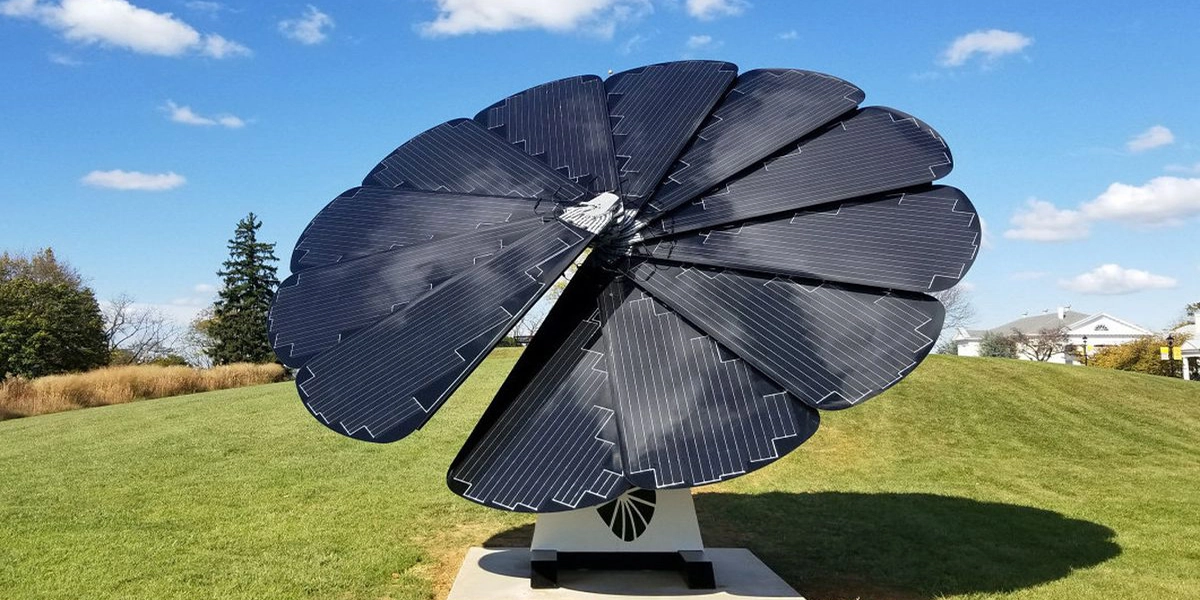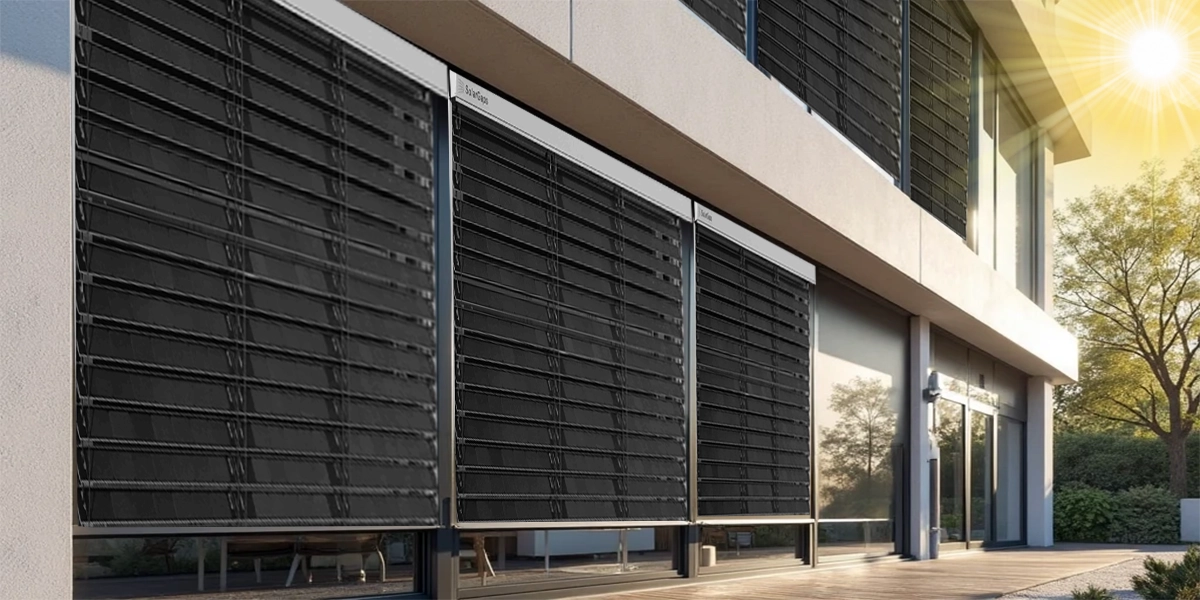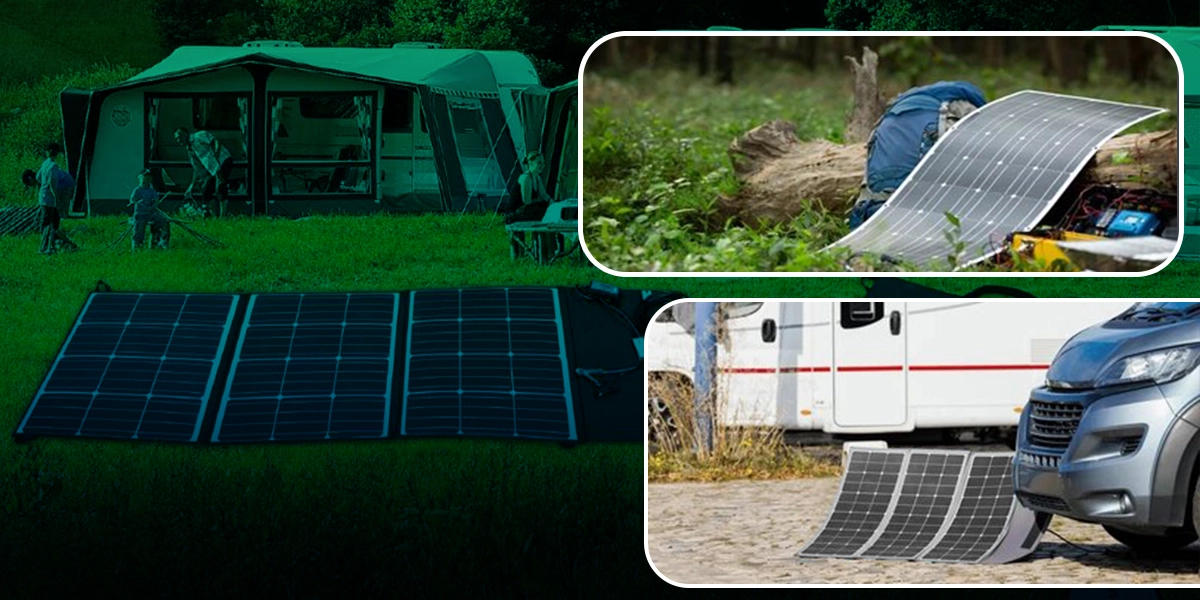- Updated On: June 30, 2025
Transparent Solar Panels: A New Technology Combining Aesthetics with Efficiency
With the technological advancements in the solar industry, capturing sun power is no longer limited to rooftop solar installations or solar farms. A recent innovation is transparent solar panels, which allow you to harness solar power without compromising aesthetics or efficiency. In contrast to traditional panels that require opaque, large areas, you can install these transparent modules in windows, facades, skylights, and other similar applications.
What truly sets this technology apart is that it can become an integral element of modern architecture without sacrificing aesthetics. This new solar technology is not just about performance; it’s also about design and flexibility. As cities expand and structures reach for net-zero energy, transparent solar offers a solution that is both efficient and stunning.

In this article, we will have a complete review of what transparent panels are, how they work, and their benefits. Also, we will compare them with traditional solar panels to analyze which works well for you.
What are transparent solar panels?
One of the most innovative solar panel technologies that has the potential to revolutionize the use of solar energy is photovoltaic glass. These translucent solar panels can practically produce electricity from windows, whether they are in houses, workplaces, cars, or even smartphones.
The Michigan State University (MSU) researchers developed the first complete transparent solar concentrator in 2014. Almost any window or sheet of glass might become a PV cell thanks to this transparent solar panel. Researchers in the U.S. and Europe had already made solar glass completely transparent by 2020.
These transparent solar panels are simple to install in various locations, from massive windows in skyscrapers to mobile devices like e-readers, laptops, or phones. The technology has the potential to make almost every building in the US and the world a solar producer because these solar power windows can easily replace the conventional glass windows seen in houses and offices.
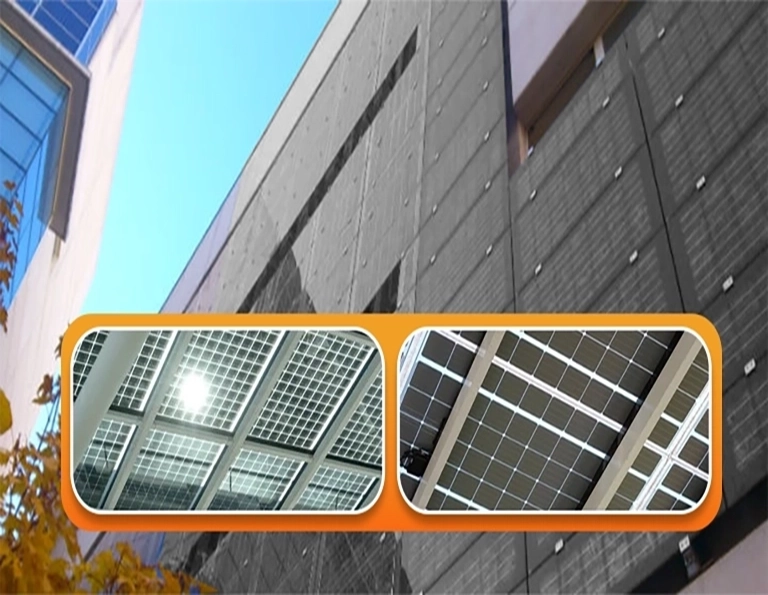
How do solar panel windows work?
The transparent solar panel is basically a counterintuitive concept. Clear solar glass allows sunlight to pass through, negating the benefit of using sunlight. Normal visible light can still flow through the cell, but it captures the part of the sun’s spectrum that is invisible to the human eye. The organic salts that make up the TLSC are designed to absorb particular invisible UV and infrared light wavelengths, which then emit another invisible wavelength of light when they glow. This new wavelength is then directed to the window’s edge, where it converts into electricity by thin PV solar cell strips.

Researchers predict that the TLSC will provide an efficiency of around 10% once we produce transparent solar panels in bulk. This invisible technology will scale from commercial and industrial applications to homeowners while being affordable.
What are the main types of transparent solar panels?
Solar windows are developed using various techniques, just as solar roof panels are. Partial and full transparent solar panels are the two main types of transparent solar panels.
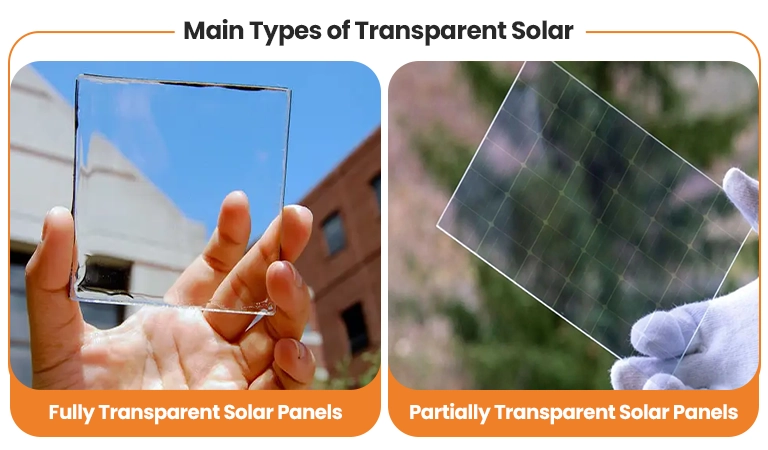
Partially Transparent Solar Panels
This partially transparent solar panel, designed by Heliatek GmbH, a German manufacturer, can absorb almost 60% of the sunlight that it receives. The efficiency of partially transparent solar panels is 7.2% lower than standard solar PV cells. However, by modifying the ratio of transmitted sunlight, we can expect more solar power generation. For example, it’s usually vital to minimize the amount of light that enters south-facing glass buildings. The partially transparent solar panel can perform well in these conditions.
Fully Transparent Solar Panels
It’s important to understand that solar panel efficiency is not the most important factor when it comes to solar panel windows. In practical terms, a less efficient solar window only means that it requires a larger window as compared to a more efficient panel to generate the same amount of electricity. When these fully transparent solar panels go into commercial production, researchers predict that their efficiency may reach 10%.
What are the top advantages of transparent solar panels?
Transparent solar panels offer benefits, especially in situations where traditional panels are not feasible:
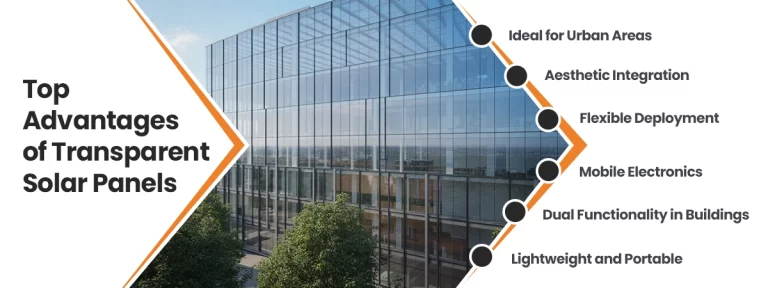
1. These panels enable buildings to capture solar energy by leveraging their glass surfaces in populated urban environments with less rooftop space. By doing this, you can maximize electricity generation without a larger area.
2. Clear solar panels mix in perfectly with architectural styles. The difference between regular and fully transparent solar glass is virtually undetectable. This makes it a perfect choice for architectural applications prioritizing aesthetics.
3. In contrast to conventional solar panels, transparent solar panels can operate well without direct sunlight or particular angles. This flexibility opens up more opportunities for placement on various surfaces, such as vertical glass facades.
4. When integrated into building structures, solar glass fulfills two functions. It generates energy and acts as a window, increasing the efficiency of resource use.
5. Transparent solar cells are portable and lightweight before being incorporated into glass. It provides versatility for various applications, from small-scale energy projects to mobile devices.
Invisible Solar Panels vs. Traditional Solar Panels: Which one is good for you?
Both technologies are different, and their specific uses also vary. For instance, traditional solar panels are a better choice because they are comparatively more efficient if you want to maximize your solar output in a small area. However, in situations when a see-through PV module is required, transparent solar panels are a good option. Also, the technology for transparent solar panels is constantly developing. The lifespan of both technologies is comparable, as MSU engineers have recently made translucent solar panels with a zinc-oxide layer that can increase their lifespan by up to 30 years. Traditional solar panels perform well in rooftop and solar farm ,but they are lacking in other situations, particularly in high-density locations where lightweight solar cells are required.
In conclusion, transparent solar panels have a bright future. Even solar glass with a moderate level of efficiency may significantly contribute to the global clean energy targets, as there are billions of square meters of glass surfaces globally. We anticipate extensive use in urban settings, new buildings, and high-tech consumer goods as efficiency rises and costs decrease.
If you are looking for efficient and affordable solar solutions and battery backups, Solar SME is a trusted solar installer near you. You can Get a FREE Quote with our smart solar calculator NOW!
Related Articles:
SmartFlower solar panels stand out as a brilliant fusion of technology and elegance. These sunflower solar panels are best suited for homes and businesses interested in going green without compromising on looks. explore how they work and unique features!
Solar blinds are becoming a home technology game-changer. Window blinds not only control sunlight but also collect sunlight, converting natural light into clean energy from your windows. Explore how they work and what to consider before choosing them.
Among modern innovations, flexible solar panels are bringing portability, versatility, and innovation to solar. Unlike traditional panels, these solar panels are lightweight, flexible, and ideal for non-standard surfaces such as RV roofs, tents, boats, and even curved buildings. In this article, we will take a deeper look at the working of flexible solar panels and in what conditions they are suitable for you. Also, we will compare them with traditional solar panels.

